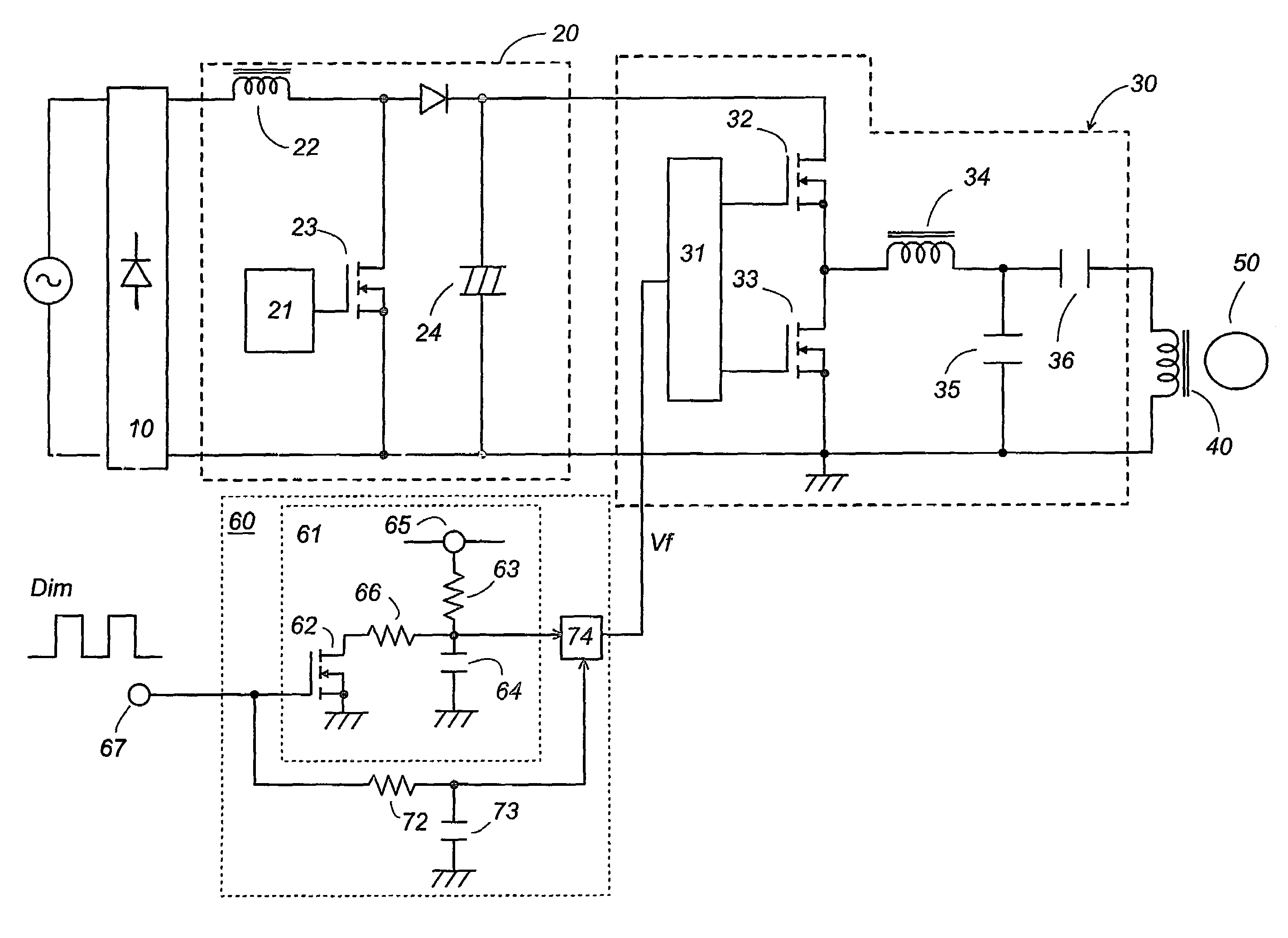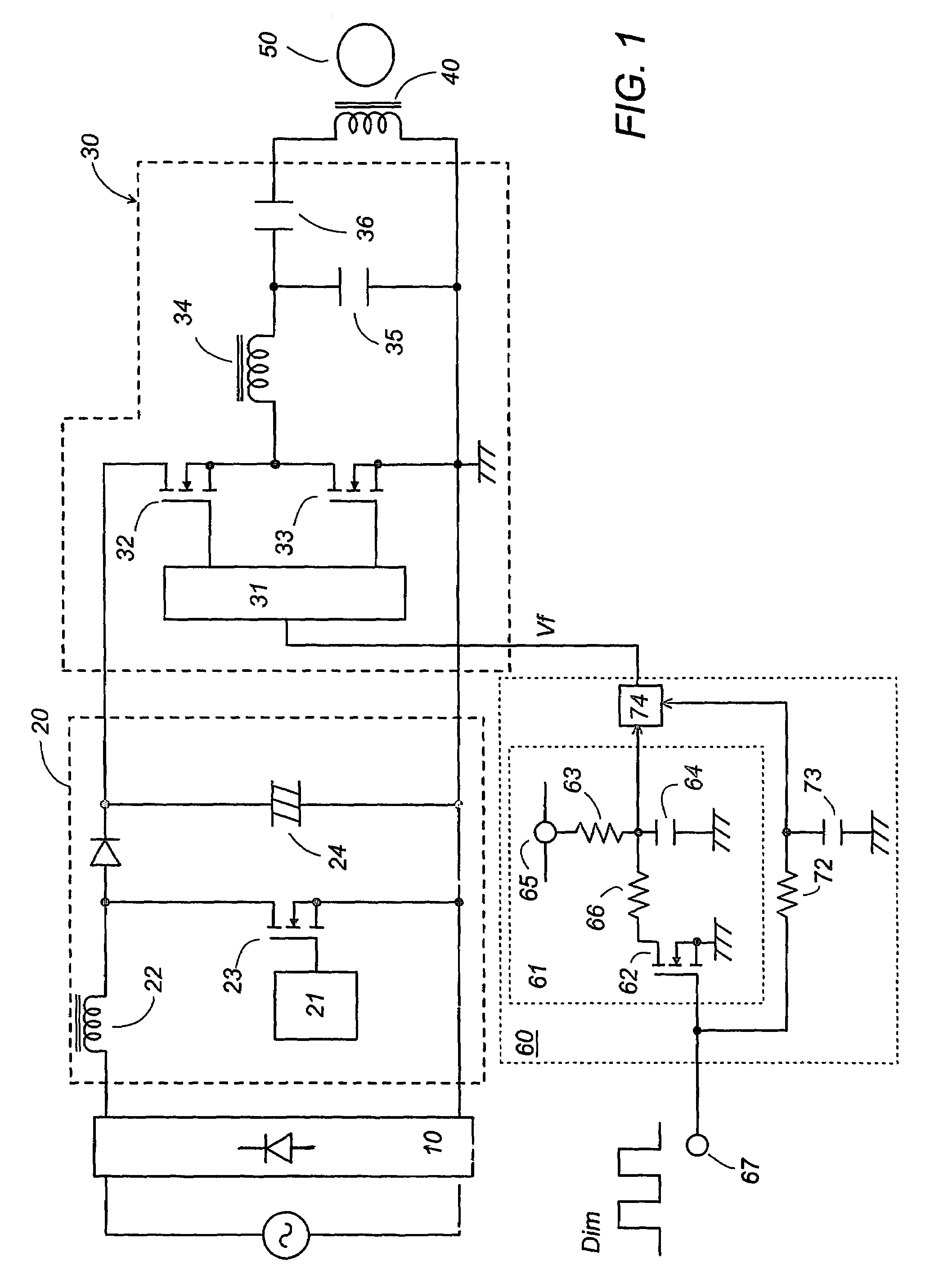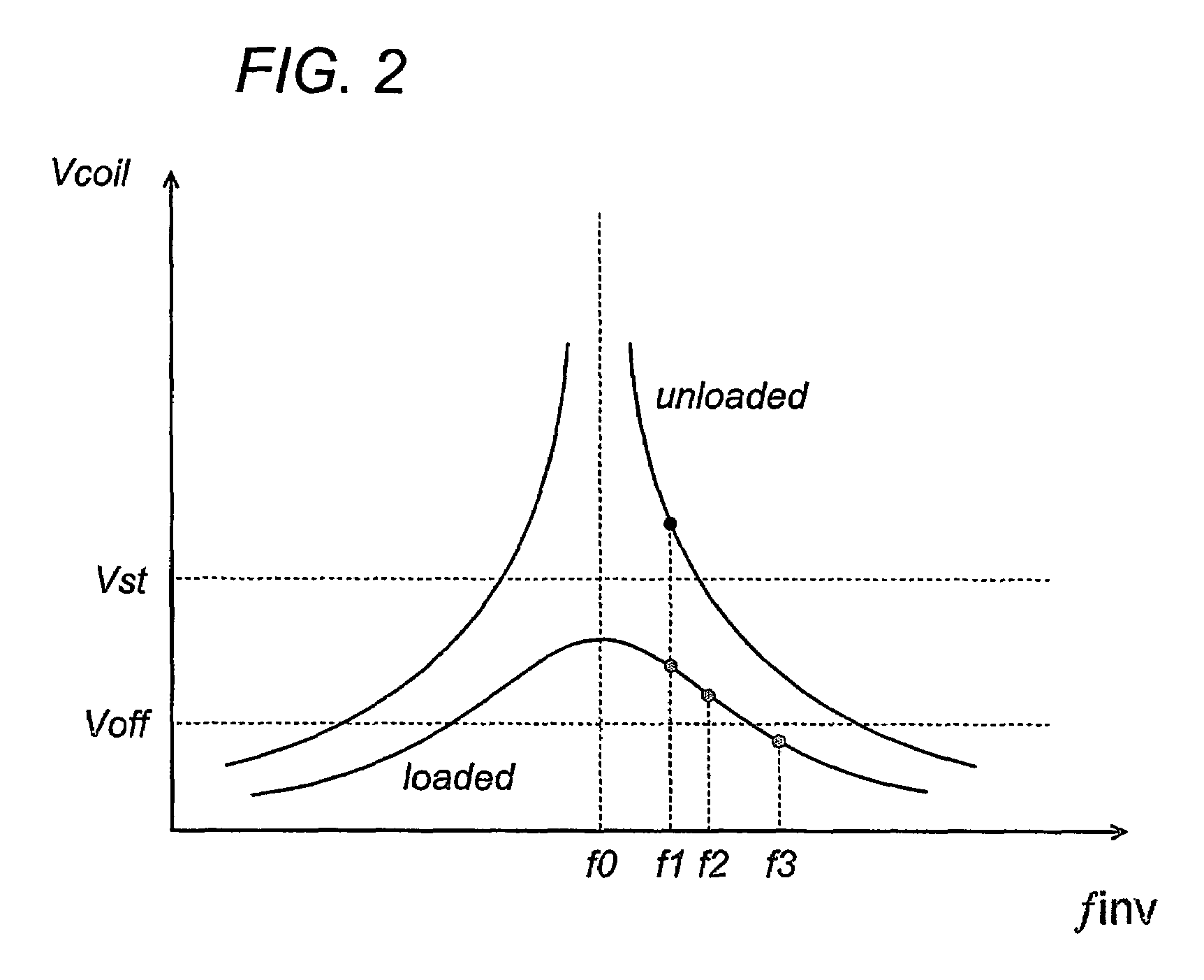Dimmable ballast for an electrodeless discharge lamp
a technology of electrodeless discharge and ballast, which is applied in the direction of electric variable regulation, process and machine control, instruments, etc., can solve the problem of not completely satisfying the ballast, and achieve the effect of minimising nois
- Summary
- Abstract
- Description
- Claims
- Application Information
AI Technical Summary
Benefits of technology
Problems solved by technology
Method used
Image
Examples
Embodiment Construction
[0039]Referring now to FIG. 1, there is shown an electronic ballast for an electrodeless lamp in accordance with a preferred embodiment of the present invention. The ballast includes an induction coil 40 adapted in use to be disposed adjacent to the electrodeless discharge lamp 50 for supplying the electric power to the lamp. The ballast is designed for dimming the lamp, i.e., adjusting the luminance of the lamp, and includes a rectifier 10 providing a rectified DC voltage from an AC voltage source, a DC voltage regulator 20 providing a regulated DC voltage, and a high frequency power supply, i.e., an inverter 30 powered by the output of the DC voltage regulator 20 to supply a high frequency AC power to the discharge lamp 50. The inverter 30 includes a resonant circuit through which the high frequency AC power is supplied to the discharge lamp 50.
[0040]The DC voltage regulator 20 is in the form of a conventional chopper having an inductor 22 and a switching element 23 which is drive...
PUM
 Login to View More
Login to View More Abstract
Description
Claims
Application Information
 Login to View More
Login to View More - R&D
- Intellectual Property
- Life Sciences
- Materials
- Tech Scout
- Unparalleled Data Quality
- Higher Quality Content
- 60% Fewer Hallucinations
Browse by: Latest US Patents, China's latest patents, Technical Efficacy Thesaurus, Application Domain, Technology Topic, Popular Technical Reports.
© 2025 PatSnap. All rights reserved.Legal|Privacy policy|Modern Slavery Act Transparency Statement|Sitemap|About US| Contact US: help@patsnap.com



